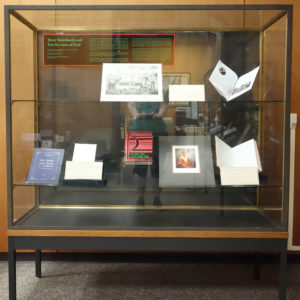Materials displayed in this spotlight exhibit come from the collections of Rare Books & Special Collections (RBSC) and The University of Notre Dame Archives. Please note that the corridor outside RBSC has construction barriers, but we remain open to all.
by Jean McManus, Catholic Studies Librarian
The Sisters of Loretto (SL) founded 1812 as The Friends of Mary at the Foot of the Cross, Washington County, Kentucky
The Oblate Sisters of Providence (OSP) founded 1829, Baltimore Maryland
The Franciscan Sisters of Perpetual Adoration (FSPA) founded 1849, Wisconsin
These three distinct societies of women religious, featured in the June-July Special Collections spotlight exhibit, have their origins in the 19th century United States, on the frontier, among immigrant Catholics in the east, and in the Midwest, with varying experiences in relation to slavery, racial segregation, and discrimination in the American Catholic milieu. In their different places and motherhouses, these groups of sisters have cared for orphans and widows, educated children, and all have continuously responded to the “needs of the time,” in the words of Sister Rita Michelle Proctor, OSP, the current Superior General of the Oblate Sisters of Providence. Gender, race, religion, and place shaped and continue to shape their stories.
Sisters of Loretto
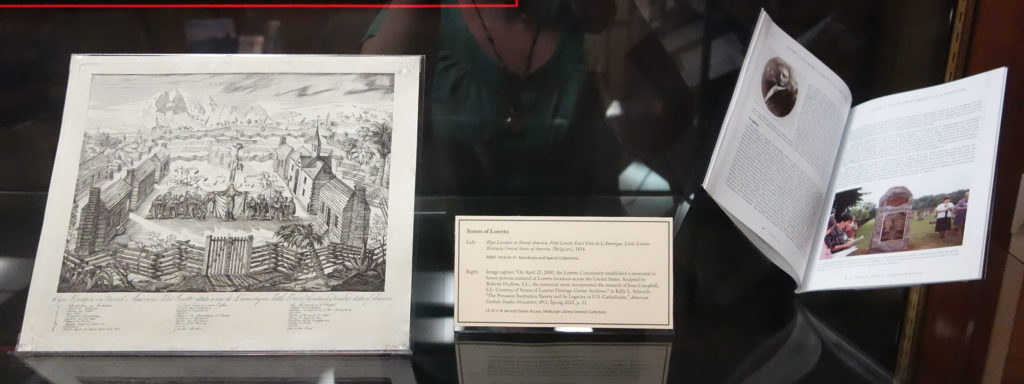
The Sisters of Loretto were founded as the Friends of Mary at the Foot of the Cross in 1812, among the earliest sisterhoods established in the United States. The founding Sisters—Mary Rhodes, Ann Havern, and Christina Stuart—worked with Belgian missionary Fr. Charles Nerinckx, who became their clerical founder. Nerinckx supported the new society by writing their Rule, helping to build Little Loretto, their first home, and commissioning the print displayed here. The landscape in the engraving is fantastically rendered via the European imagination by the Belgian printer, but also rather accurate in portraying the rough hewn buildings, barefoot sisters, and split rail fence around their buildings.
The Sisters of Loretto relied on enslaved people to provide labor at their several missions before Emancipation, and also brought some African American women into the society as oblates, with different rules and professions. The story is not simple or altogether documented in the archives. The Sisters of Loretto today are present in the United States, and around the world, and center education, peace and justice in their work. More historical investigation appears in the LOREtto blog posts, written from the archives at the motherhouse in Kentucky. In 2000, the community erected a memorial to honor persons enslaved at their missions. Sisters of Loretto continue reckoning with their historical relationships with people of color at Little Loretto and other places, as they research their own and related archives regarding slavery and Native American children at Loretto-run schools.
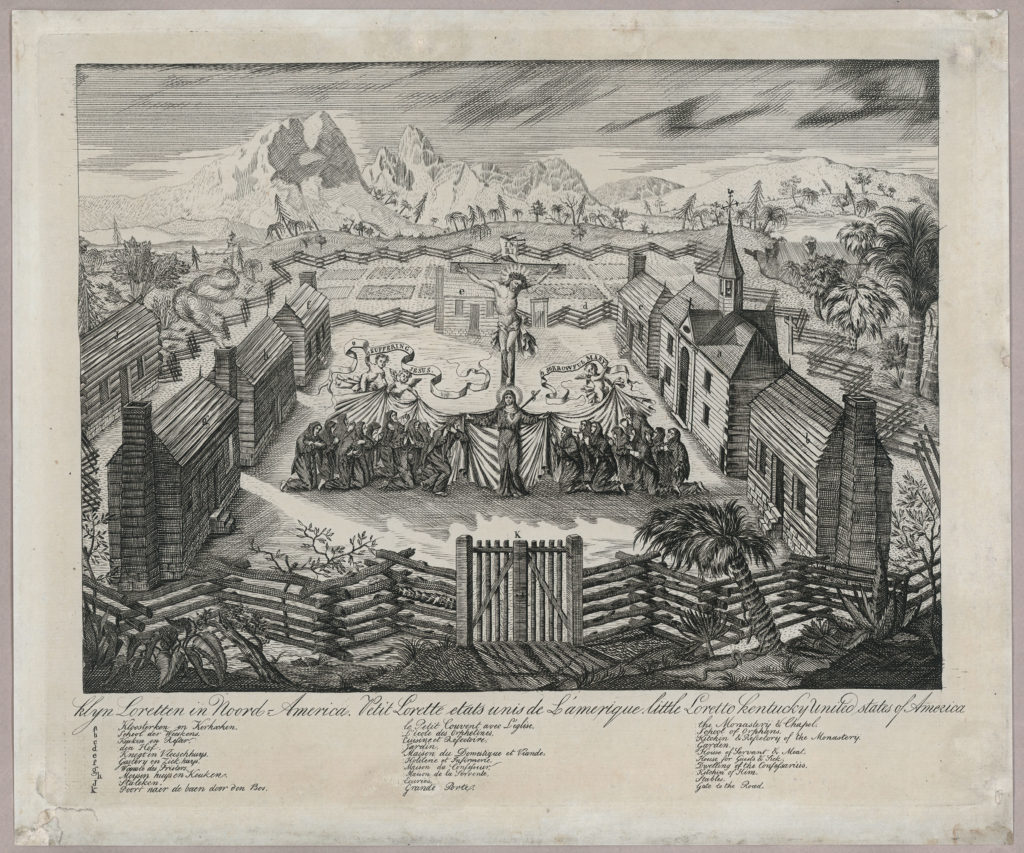
Oblate Sisters of Providence and Mother Mary Lange
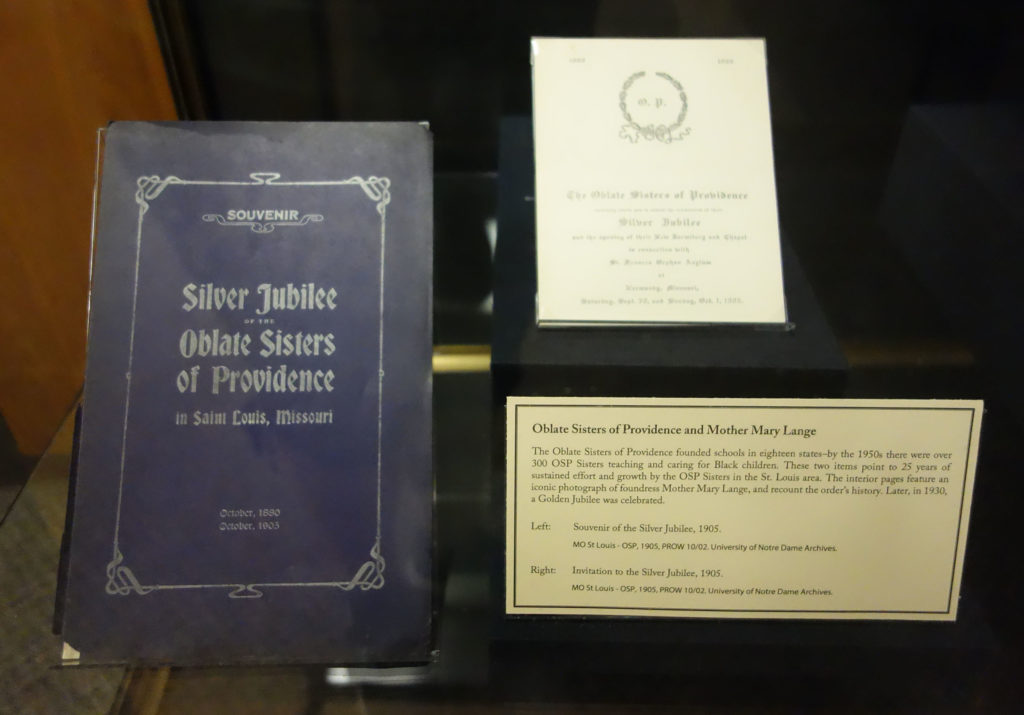
Foundress Mother Mary Lange of the Oblate Sisters of Providence was still alive in Baltimore when members of the order responded to the invitation of Rev. Ignatius Panken, S.J., to educate Black Catholic children in St. Louis in 1880. They marked anniversaries of service in education and care of orphans in 1905 with a celebration and printed souvenir. The extension of their mission to St. Louis was consistent with the principles of their founding.
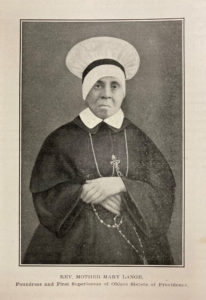
From the souvenir program of the Silver Jubilee of the Oblate Sisters of Providence in Saint Louis, Missouri, 1905.
In 1828, Elizabeth Lange, who was born into a Catholic family and educated in Cuba, had emigrated to a French-speaking Catholic enclave in Baltimore and was already teaching Black children at a school in her home. Urged by the French Sulpician priest who became their ecclesiastical director, Fr. James Joubert, Elizabeth Lange (who became Sister Mary Elizabeth Lange) with fellow teacher, Maria Balas (who became Sister Mary Frances), Rosine Boegue (who became Sister Mary Rose), and Almaide Duchemin (who became Sister Mary Therese) began the work to minister to the children of Haitian refugees by making formal professions in July 1829. As the OSP website history proclaims, “The Oblate Sisters of Providence is the first successful Roman Catholic sisterhood in the world established by women of African descent.” The cause for sainthood for Mother Mary Lange recognizes her heroic virtue in founding and sustaining the Oblate Sisters of Providence to educate African American Catholic children in Baltimore and beyond. Her cause for beatification was opened in 2004, and she is a Servant of God.
Oblate Sisters of Providence moved to St. Louis in 1880 and taught Black Catholic children at St. Elizabeth School. Changes in parish makeup led the Sisters to establish St. Frances’ Orphan Home (1882-1952) and St. Rita’s Academy (1912-1950), both ministering originally to girls. Eventually the order founded schools in eighteen states–by the 1950s there were over 300 OSP Sisters teaching and caring for Black children.
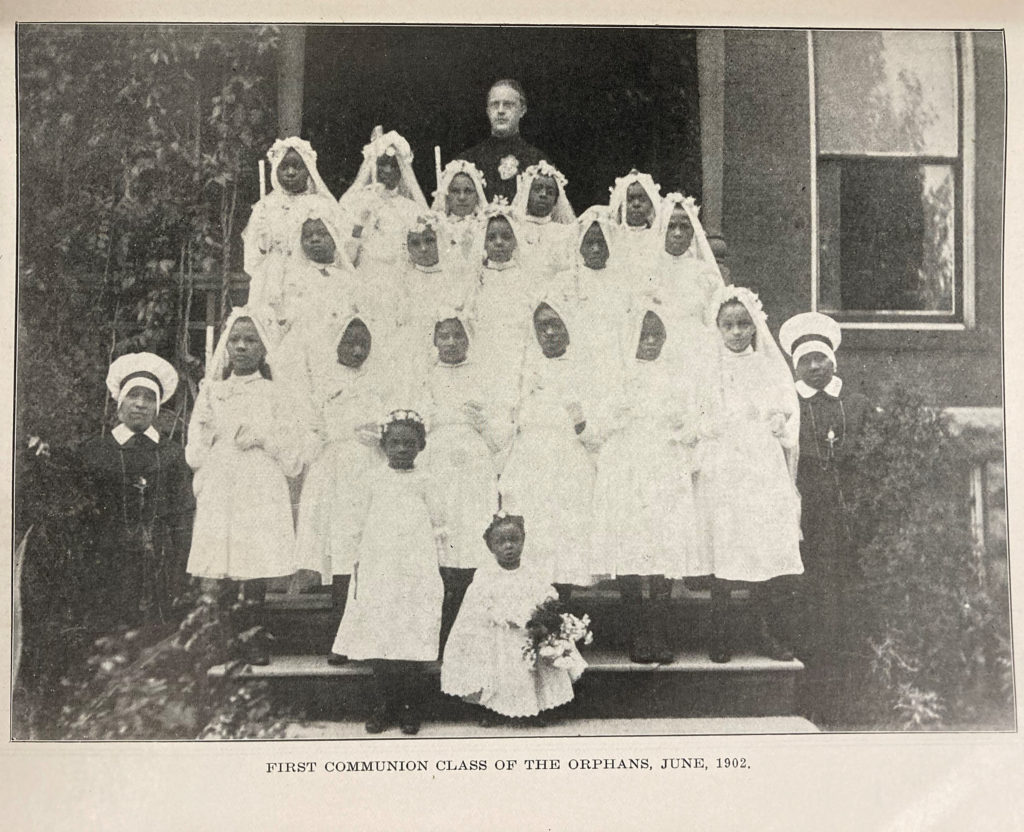
From the souvenir program of the Silver Jubilee of the Oblate Sisters of Providence in Saint Louis, Missouri, 1905. [MO St Louis – OSP, 1905, PROW 10/02. University of Notre Dame Archives.]
The two items featured in this exhibit point to 25 years of sustained effort and growth by the OSP Sisters in the St. Louis area. The interior pages feature an iconic photograph of foundress Mother Mary Lange, with a short history of the order. Also included are photographs from the St. Louis missions, such as the “First Communion class of the orphans, 1902,” showing 18 girls, two Oblate Sisters, and one white priest. Later, in 1930, a Golden Jubilee was celebrated, marking 50 years in the St. Louis area. The challenging circumstances faced by the OSP Sisters in St. Louis are well documented in Ann Rosentreter’s 2016 thesis, Black, Catholic, and female : the Oblate Sisters of Providence in St. Louis, Missouri, during the interwar years.
Franciscan Sisters of Perpetual Adoration and Sister Thea Bowman
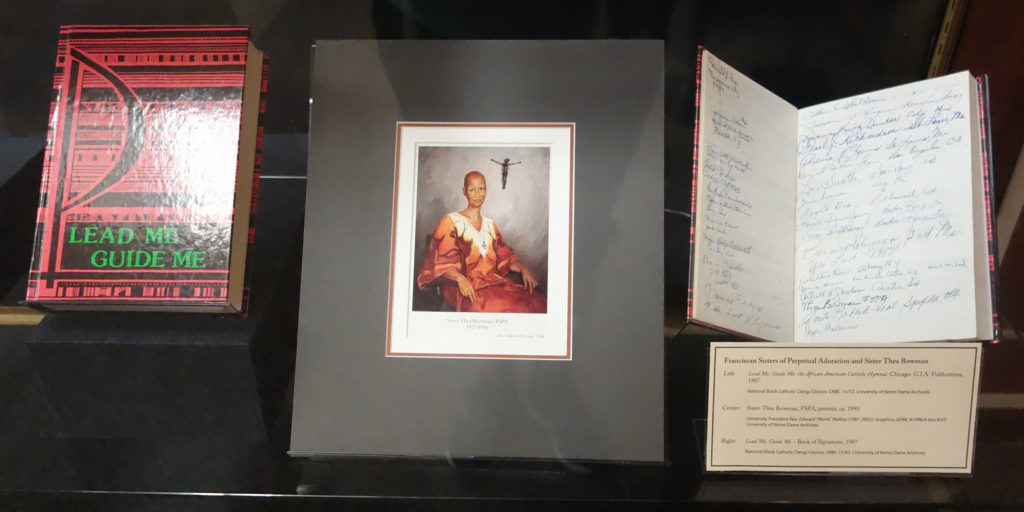
[National Black Catholic Clergy Caucus, CNBC 15/12. University of Notre Dame Archives.]
Center: Sister Thea Bowman, FSPA, portrait, ca. 1990 [University President Rev. Edward “Monk” Malloy (1987-2005): Graphics, GPML #1996-6 box B:37, University of Notre Dame Archives.]
Right: Lead Me, Guide Me–Book of Signatures, 1987 [National Black Catholic Clergy Caucus, CNBC 15/62. University of Notre Dame Archives.]
Finally, we have a glimpse of the work of the Franciscan Sister of Perpetual Adoration, Sister Thea Bowman, now a Servant of God, who was educated by the FSPA Sisters in her home town of Canton, MS, became a convert to Catholicism at age 9, and entered the order as a determined 15 year old girl. She taught and worked for racial reconciliation in the Catholic church, and evangelized through song, particularly advocating for a Black Catholic tradition. Sister Thea Bowman died in March, 1990, and weeks later the University of Notre Dame honored her with the Laetare Medal, the first time the medal was given posthumously.
The Franciscan Sisters of Perpetual Adoration have long pursued their mission of education along with their devotional practice of perpetual adoration. The Sisters continue to lift up Sister Thea Bowman by supporting her cause for sainthood, and the foundation started with her input and name. The Sister Thea Bowman Black Catholic Education Foundation provides scholarships for Black students to attend Catholic colleges and universities.
One result of Sister Thea’s evangelization and ministry is this 1987 hymnal, Lead Me, Guide Me, a collaborative project with a host of Black Catholics that includes her essay, “The Gift of African American Sacred Song.” The hymnal signature book includes hundreds of signatures, many dated May 23, 1987, a month after the publication of Lead Me, Guide Me. Perhaps it was a book launch and celebration? Sr. Thea Bowman was part of it, as her signature attests.

